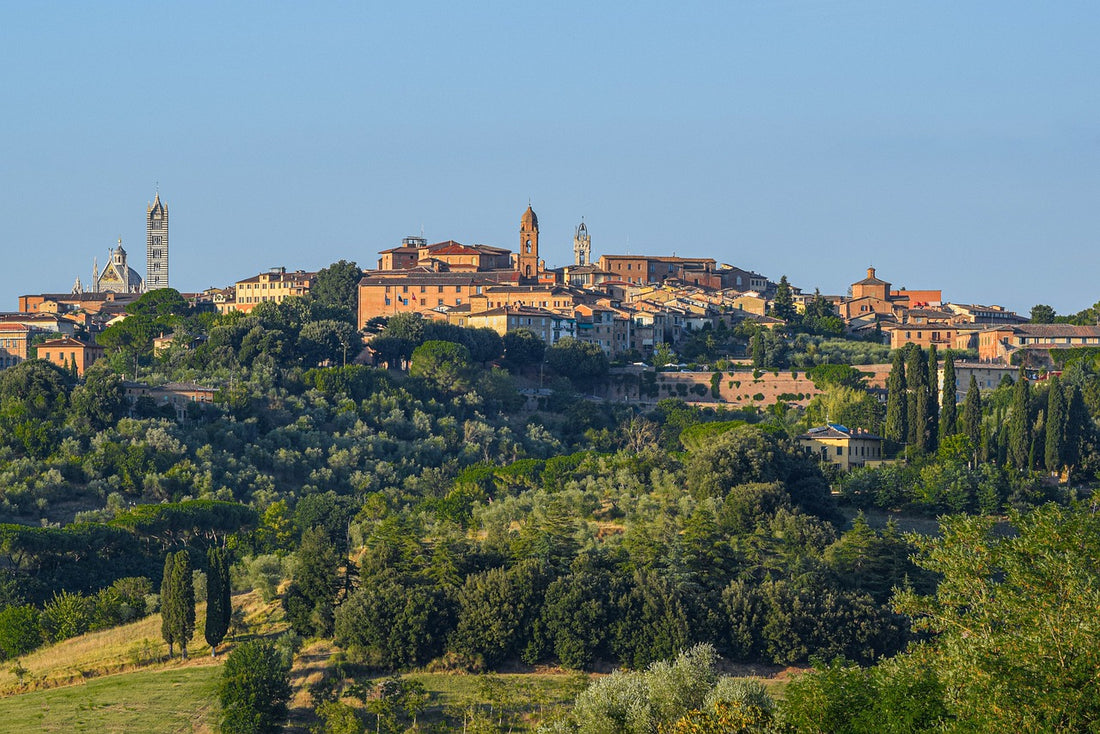Patron of the city of the Palio
The proximity of Nannini to Siena means being an integral part of its traditions, its saints, its culture and much more. Traditions such as the recipes they use for classic Tuscan sweets, the paths and tribulations of the Palio, and especially its patron saints - a tradition that has been part of Italy since ancient times.

In the city of Siena, the first patron saint of Sant'Ansano is celebrated on 1 December and the celebrations for the saint coincide with the beginning of the Contrada year. According to tradition, Sant'Ansano brought Christianity and evangelized the city of Siena.
Sant'Ansano in Siena
Sant'Ansano was born in 284 and from a very young age he professed faith in Christ. In that historical period, those who spoke of universal love, of peace and those who adored a man who died on the cross, were not frowned upon, also because Christians refused to see the emperor as a divinity. This led to various persecutions, of which Sant'Ansano was also a victim. It is said that Sant'Ansano came into contact with religion through the matron Maximus and was discovered and denounced by his father.
It is not certain when Sant'Ansano arrived in Siena, but according to devotional legend, it was at the invitation of an angel that the saint made his way to the city of Siena. Sant'Ansano, arrived in the Sienese city, began to preach the gospel and baptize the first Christians of Siena, so much so that he had the title of "baptizer of the Sienese".
Due to his religious proselytism, Sant'Ansano was subjected to "the test of fire and boiling oil", which took place in an ancient Sienese settlement, which took its name from the saint: Fosso di Sant'Ansano. According to legend, the saint was unharmed from the test of fire.
Following this test, Sant'Ansano was locked up in a tower on the hill of San Quirico, from which he would continue to baptize the faithful. From the tower, Sant'Ansano only came out on 1 December 304, to be taken to Dofana, where he was beheaded.
The remains of Sant'Ansano between Siena and Arezzo
In 1108, the bishop of Siena, Gualfredo, would have urged a group of faithful to steal the body of Sant'Ansano, which for centuries had been in the Diocese of Arezzo. It is said that there was an armed clash between Siena and Arezzo; following this clash, the Sienese managed to take possession of the remains of Sant'Ansano and brought them to Siena, to give the saint a worthy burial in the cathedral.
According to legend, the door of San Come takes its name from the screams of the citizens of Siena, when they saw the procession with the remains of Sant'Ansano arrive in the city. It is said, in fact, that the Sienese began to shout "the saint comes, the saint comes" once the procession was sighted.According to other rumors, however, the bishop of Siena, Gualfredo, would have agreed with the bishop of Arezzo, Gualtiero, to divide up the remains of Sant'Ansano. According to this version, the remains of Sant'Ansano would have been transported to Siena peacefully, while the saint's head would have remained in Arezzo.

One of the various "passions" concerning Sant'Ansano, paints the Sienese as saviors. It is said, in fact, that malicious people tried to take the saint's corpse away from the tomb, but were then put to flight by the Sienese. After the escape of the criminals, the Sienese realized that the body of Sant'Ansano had remained intact, this was a sign of holiness, and so they decided to take him in procession to Siena to make him rest in the cathedral.
In 1359, the body of Sant'Ansano was burned by lightning and what remained of it is found in different areas. The head is in fact preserved in a silver reliquary at the Cathedral of Arezzo, the right arm is located in Siena, while the left one is in Dofana and a finger is in the municipality of Vinci, preserved in the Piave di San Giovanni Battista in Sant ' Ansano.
Siena embraces the tradition of the cult of Sant'Ansano in the same way it embraces the tradition of the Palio, the Nannini pastry shop, Piazza del Campo and all the other symbols that carry the name of the city at the top.

